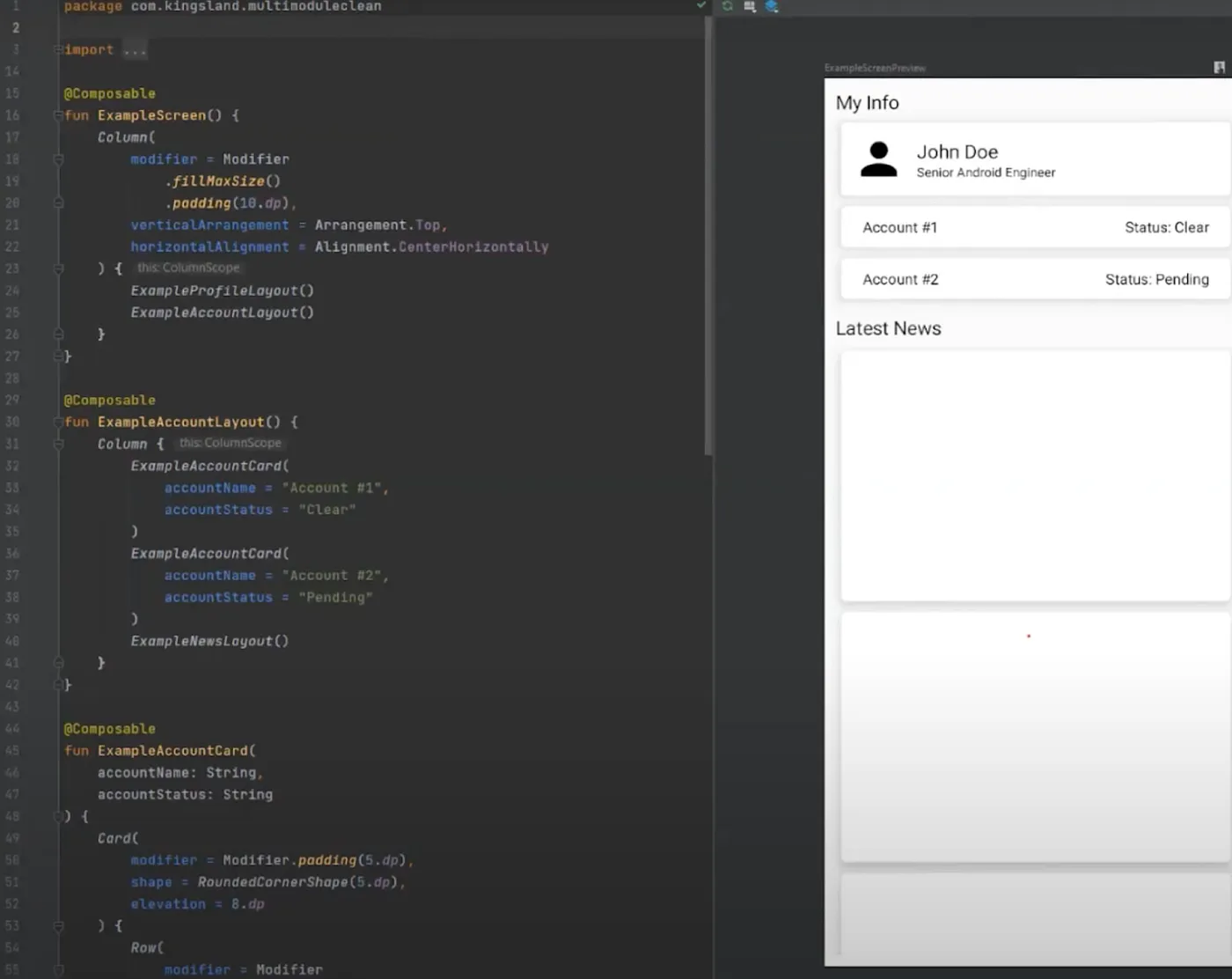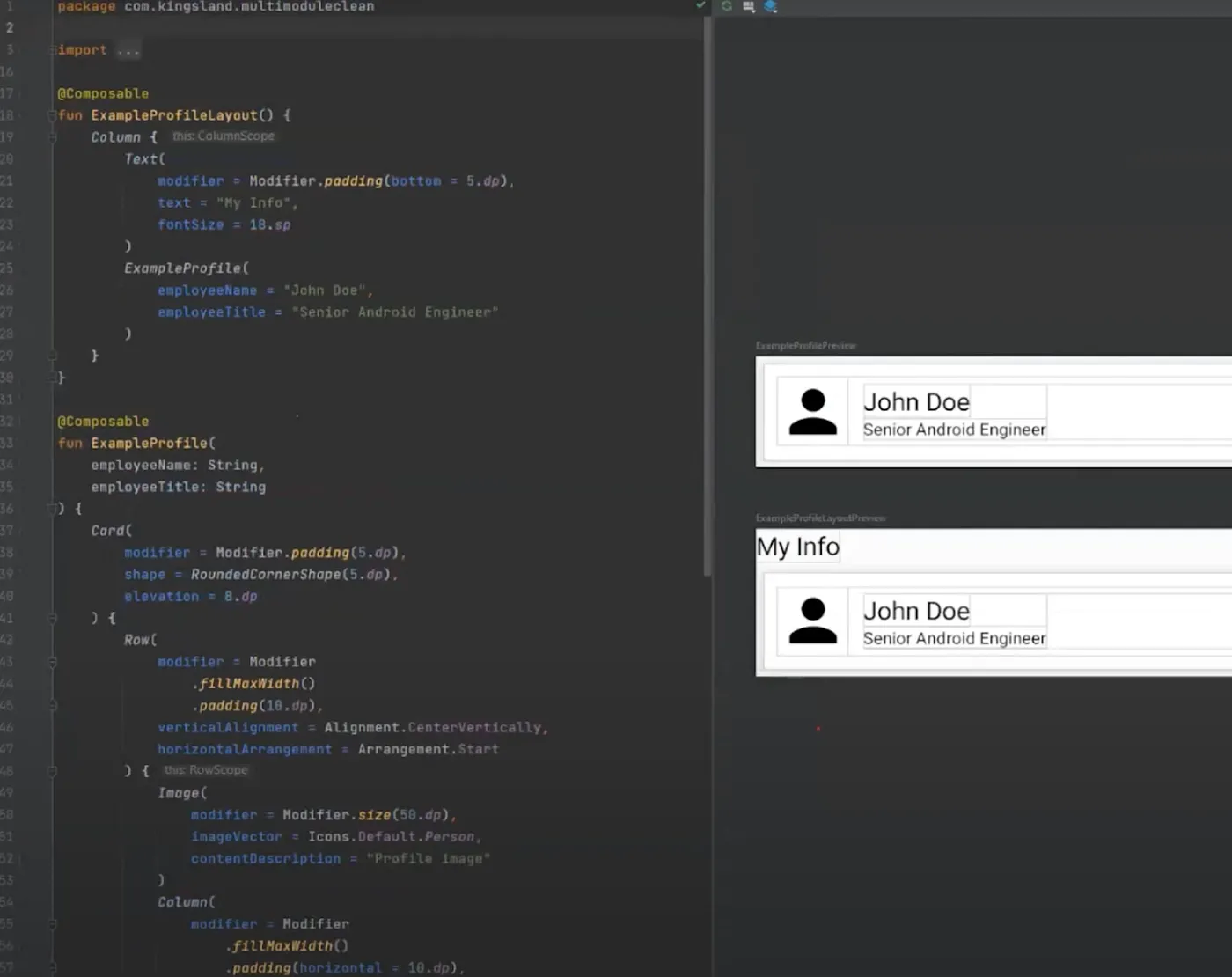Jetpack Compose has been on the tip of every developer’s tongue since the release of its original 1.0 stable version. Jetpack Compose is Google’s modern toolkit for building native Android UI. It simplifies and accelerates UI development to quickly bring your app to life with less code, powerful tools, and intuitive Kotlin APIs. Compose UI is defined by creating modular, easily reusable Composable functions.
Declarative UIs have developed into a major innovation trend, lending adoption to be a primary growth curve for web and mobile application development teams.
Why Migrate To Jetpack Compose?
Google’s clear directive points towards moving developers towards Declarative UI development tools for future Android mobile development. Compose has been clearly articulated as the “future” of native Android and certainly the target for future platform SDK efforts — likely diverting resources from legacy development paradigms. Therefore, Google will expect Android UI development to migrate to Compose over time.
In order to prep for this full transition, there’s been a particular push for adoption, in order to prep developers for the gradual move:
- Google recommends Jetpack Compose for all new applications from the Android go- to-market platform moving forward
- Updating “View Components” is very error prone and coupled with a rather difficult process for anyone that’s used it previously comparatively to Jetpack Compose
- Jetpack Compose’s views update in response to data — meaning, the development platform has “data binding” capabilities right out of the gate!
- Like other Jetpack components, Compose has excellent backward-compatibility with older Android OS levels — even users with older Android devices can run applications built with Jetpack Compose UI
- New UI developed with Jetpack Compose can be incrementally added to existing applications built with conventional Android UI techniques (i.e. XML-based or code-based UI development). This allows developers to dip a toe in the Jetpack Compose water without a wholesale rewrite of their apps up-front
Jetpack Compose saves developers a substantial amount of time and effort for larger scale application layout files. Compose takes about a third of the average modern development duration, meaning– less code to sift through and more bandwidth to experiment and create!
Migration Strategies
There are two primary avenues to migrate an existing Android application to Jetpack Compose:
Developing A New Screen Entirely With Compose
- When new screens and features are being created within a developing Android application, Jetpack Compose functions can be accessed interoperably with “View” by using the ComposeView class
- In the case of single-activity applications, using the Navigation component for “View,” a developer can drop their composable functions into the existing framework using ComposeView
These user-friendly functions, pre-built into the Jetpack Compose interface, enable developers to convert each new Compose component without needing to change the underlying navigation or data-source logic.
Example: The below screen split utilizes the aforementioned “new” implementation of Jetpack Compose components, allowing easy transition from an existing Android application infrastructure.

Taking An Existing Screen And Gradually Transferring Components Into It
- For development teams that are completely “fresh to Jetpack Compose,” this gradual shift is a great way to get familiarized and build a culture around maintenance of a new structural interface
- Using this strategy, a development team can take their time to test out the components in order to ensure UI consistency and functionality
Example: The below screen split utilizes the aforementioned “gradual” implementation of Jetpack Compose components, allowing teams the flexibility to migrate as appropriate to an existing Android application.

Live Demonstrations
William Kingsley has crafted an intuitive demonstration to help guide you through these principles in practicum:

Be sure to follow Kingsley’s entire Lightning Talk to view this impressive demonstration in real time.
Closing Thoughts
Jetpack Compose is a fundamental rethinking of how Android UI is authored. It is a game-changer for Android developers — simplifying layouts and behaviors that once spanned multiple files and formats into an easy to navigate singular UI tree of composable functions with the power of Kotlin in the palm of your hand!
Happy coding!
To learn more about Migrating to Jetpack Compose, along with some live test samples, and to experience William Kingsley’s full Lightning Talk session, watch here.